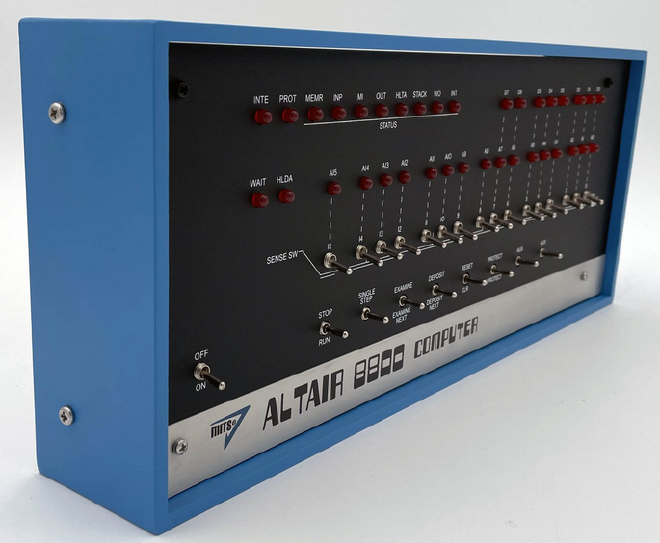Retro Tech
Table of Contents
As you might have guessed from my homelab’s printer and keyboard, I have an affinity for retro computing technology.
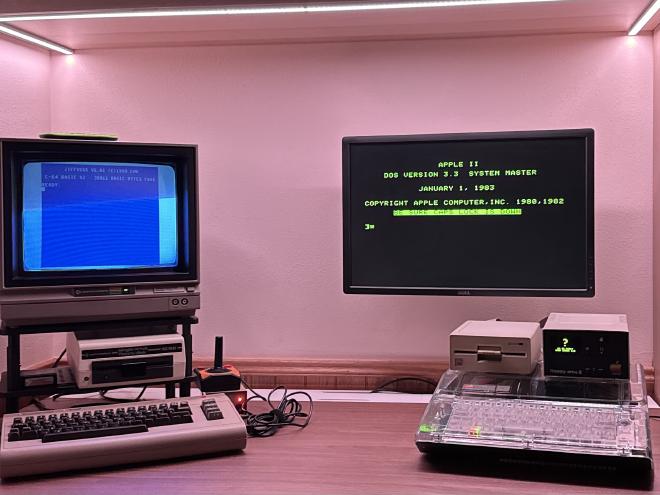
Vintage Computers #
Working on old systems can be very satisfying. Operating 40ish year old computers is a much more hands on affair than operating modern equipment. It is sort of like driving a car with a manual transmission. You have to know a bit more about what’s going on to get the most of it.
I have a vintage Apple //e computer (pictured above) that I hotrodded with a clear case from MacEffects, an HDMI card (seriously!) and USB mouse card from 8 Bit Devices, and Floppy EMU. I still have and use the old floppy drives (and my floppy disks from when I was a lad).
Also pictured above is my Commodore 64 “breadbin” with a CRT monitor. This one is far more stock than the Apple, but I do have a Pi1541 emulated floppy drive. I also have Jiffy DOS installed in the VIC-1541 floppy drive and the 64.
Retro Recreations #
If you want to get into retro computing, used Apple II and C64 computers are easy to find and inexpensive. However, not all vintage computing equipment is so accesible. That’s where emulators and retro recreations come in. The best known exmaple of this are the many retro gaming consoles on the market. If you watched “Ready Player One” and want to fire up an Atari, you can buy a new console that will play all the old games and display them on your 4K TV. They use modern hardware instead of 1970’s or 1980’s processors, but they look similar and operate similarly (in some cases, they are cycle extact emulations of the original software).
Another example is the variety of replica 8 bit machines available. If you want to experience an 8 bit system, you could run a software emulator on almost any computer and have a lot of fun programming and operating a vintage “machine.” These replicas take this a step further, providing an emulator inside a reproduction of the front panel of the machine, complete with all the buttons, knobs, toggle switches and, of course, “das blinkenlights” from the original. Like the retro gaming consoles, these units are typically much smaller.
PiDP 11 #
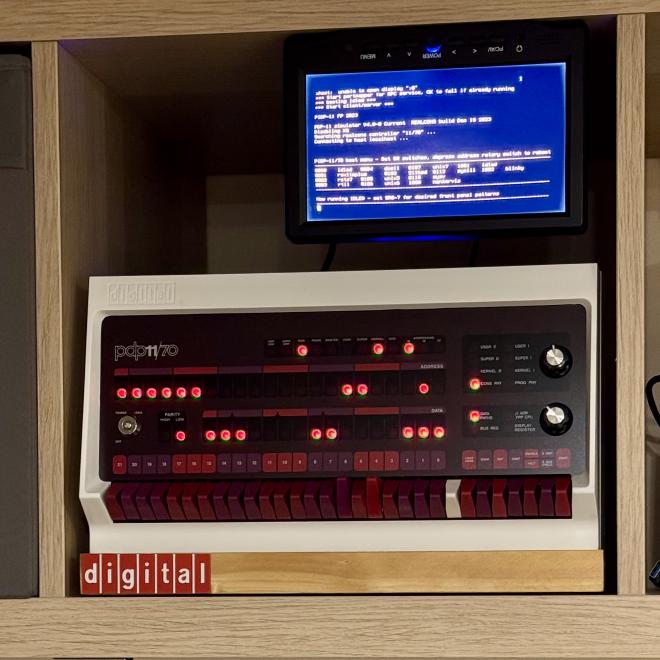
The PiDP 11, which uses a Raspberry Pi running emulator softwae to recreate a DEC PDP-11. You can run software designed to create pretty patterns with the lights, or you can one of the vintage guest operating systems, like Ultirx and BSD 2.11.
If I’m really feeling that retro DEC vibe, I can connect to the PiDP11 using my FauxVT mini VT-100 terminal.
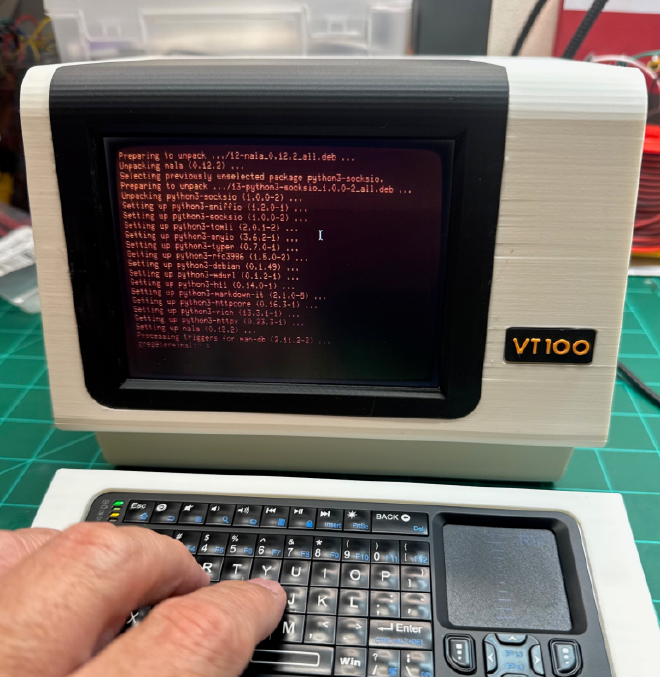
IMSAI 8080 #
When I saw the movie WarGames, I wished I had a computer setup like the one David Lightman had. Recreating his IMSAI 8080 system would cost an arm and a leg today, but there is a replica kit produced by the High Nibble, which is the next best thing. A kit is on my workbench waiting for me to put it together.
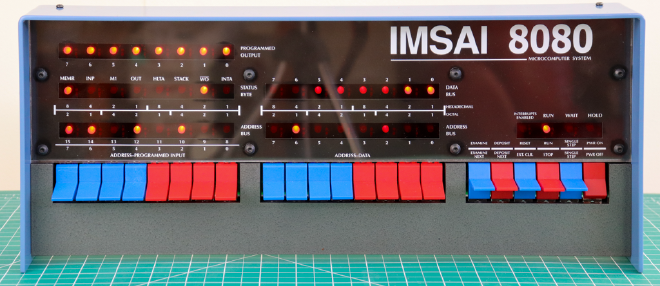
Altair-Duino 8800 #
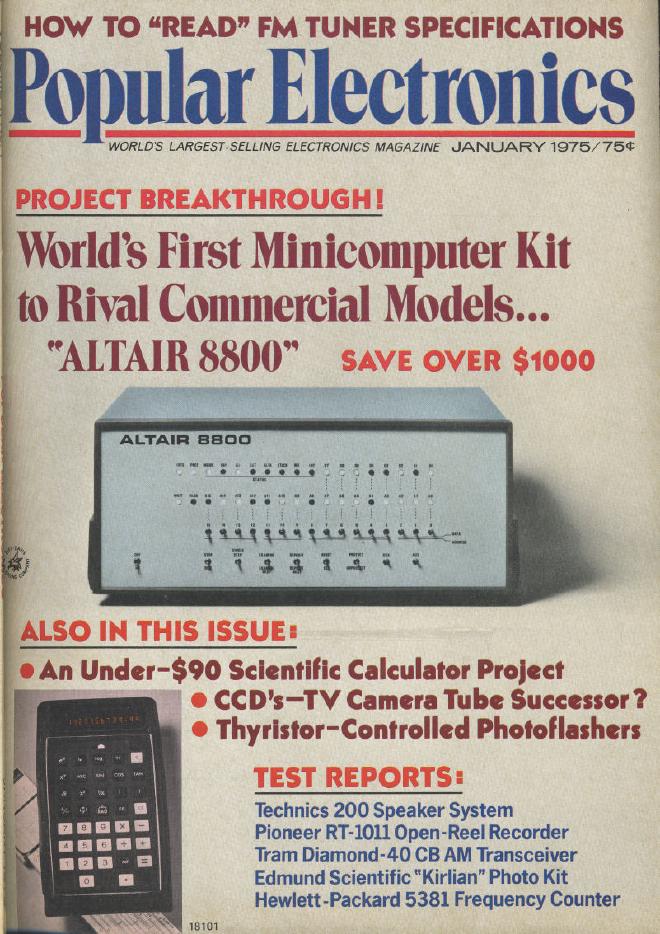
Everyone who studies the history of computers knows about the famous February 1975 Popular Electronics magazine cover that inspired Gates and Allen to develop a basic interpreter for the Altair 8800. It led to the founding of Microsoft and helped launch the personal computer revolution. Owning an Atair would be like owning a piece of history. Unfortunately, it would be a very expensive piece of history. Enter the Altair-Duino, a retro-recreation of the famous Altair 8800. All the lights and switches at a fraction of the electric bill (those S-100 systems really like power).
This kit is in line after the IMSAI. Maybe when they are built, I can get them talking. Shall we play a game?
